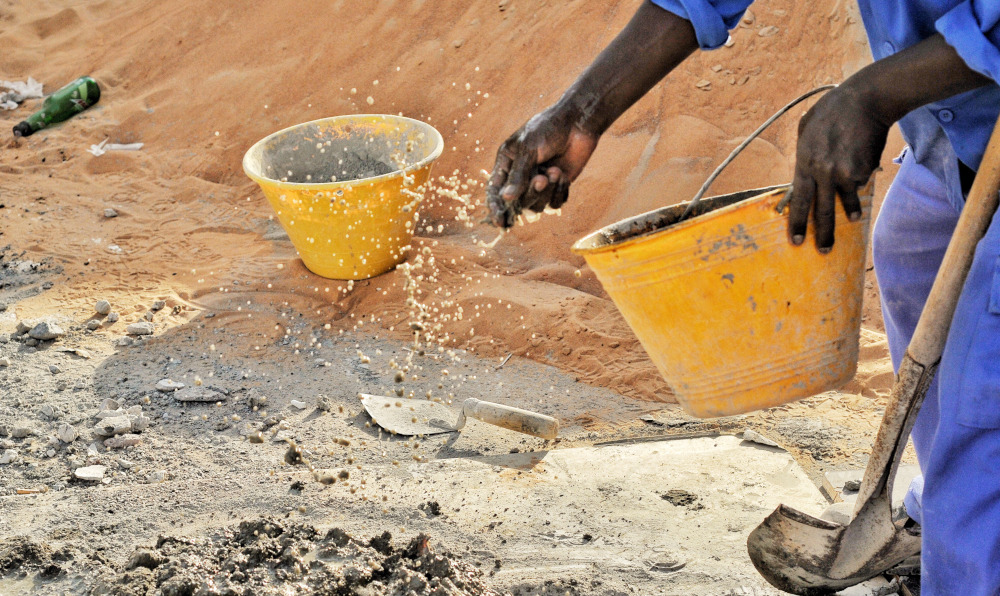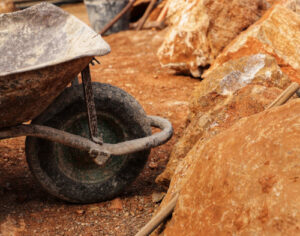
Artisanal and Small-Scale Gold Mining (ASGM) is more than a livelihood, it’s a survival mechanism for millions across Africa. From the remote hills of Guinea to the riverbeds of Tanzania, ASGM operations are responsible for producing up to 20% of the world’s annual gold output. In Africa, it employs an estimated 10 million people directly, with an additional 60 million relying on the sector indirectly for their livelihoods.
Despite its immense socioeconomic value, ASGM exists largely in the shadows. Often unregulated and informal, the sector has been historically marginalised, even criminalised, by state policies that favour large-scale, industrial mining. But this informal economy holds enormous potential. If properly supported and integrated into national frameworks, ASGM could serve as a driver of rural development, poverty alleviation, and environmental rehabilitation.
What is ASGM? Understanding the Sector
Artisanal and small-scale gold mining refers to mining conducted with rudimentary tools and processes. It is typically labour-intensive, community-based, and low-tech. ASGM is found in over 30 African countries, including Ghana, Mali, Burkina Faso, Democratic Republic of Congo (DRC), Tanzania, and Zimbabwe. ASGM often involves Manual digging or shallow pit mining, Use of mercury to extract gold from ore, Informal land tenure and lack of legal permits and Family or cooperative-based labour structures
For many, ASGM represents the only viable alternative to unemployment or subsistence farming. In countries with weak state infrastructure, mining offers quick cash, social mobility, and even political influence.
Economic Importance and Social Impact
 Income Generation – In areas where formal employment opportunities are limited, ASGM serves as a vital income source. A miner in rural Mali or Burkina Faso can earn several times the national minimum wage through gold panning or processing. For women, especially, the sector provides a rare opportunity for economic independence.
Income Generation – In areas where formal employment opportunities are limited, ASGM serves as a vital income source. A miner in rural Mali or Burkina Faso can earn several times the national minimum wage through gold panning or processing. For women, especially, the sector provides a rare opportunity for economic independence.
Rural Development – ASGM has spurred micro-economies in otherwise underdeveloped regions. Local businesses, equipment suppliers, food vendors, transporters, thrive around mining sites. In some regions of Ghana, ASGM contributes up to 30% of the local economy.
Community Empowerment – Some communities have used proceeds from small-scale mining to invest in schools, roads, and healthcare. In Tanzania’s Geita region, locally organised mining cooperatives have financed boreholes for clean water and invested in solar lighting for off-grid communities.
Why Formalisation Matters
Bringing ASGM into the formal economy isn’t just about compliance, it’s about unlocking its full potential. Formalisation can lead to:
- Legal protection for miners: Rights to land and legal recognition reduce harassment and exploitation.
- Safer practices: Training in mercury-free techniques and mine safety can prevent injuries and environmental damage.
- Increased revenue for governments: Through taxation and export regulation, states can benefit from the sector’s economic output.
- Community development: Organised cooperatives are more likely to invest collectively in schools, clinics, and roads.
- Market access: Formal miners can tap into ethical gold markets, fetching better prices and reducing reliance on illegal traders.
Successful Models and Examples
- Ghana’s Community Mining Scheme (CMS) – Launched in 2020, CMS aims to legalise and regulate small-scale mining by offering simplified permits and technical training. As of 2024, over 160 CMS sites had been established, employing more than 40,000 legal miners. The initiative has led to improved safety standards, environmental management, and revenue collection.
- Tanzania’s Mining Commission – Tanzania has streamlined its licensing process and reduced taxes for registered ASM operators. It has also introduced mineral trading centres to promote transparency and prevent smuggling. In 2023, over 500,000 small-scale miners were registered, contributing nearly 40% of Tanzania’s total gold production.The PlanetGOLD
- Programme – Backed by the Global Environment Facility and implemented in several African countries, PlanetGOLD works to eliminate mercury use in ASGM. It trains miners in alternative technologies such as borax processing, supports legal formalisation, and connects miners to fair trade markets.
Artisanal and small-scale gold mining is often painted as either a developmental saviour or an environmental villain. In truth, it is both a lifeline and a liability. But with the right interventions, ASGM can be transformed from an informal survival strategy into a formalised engine of growth.
The challenge lies not in eliminating the sector but in recognising its value, and building systems that nurture, not punish, its participants. Africa’s gold-rich soil has much to offer, but it is the people who mine it, often with bare hands and boundless resilience, who hold the continent’s golden future in their grasp.



